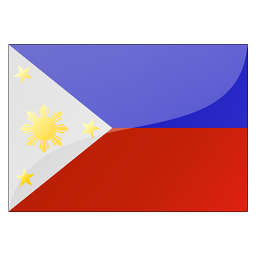



Once the hub of a booming sugar industry, these days Bacolod is known for its food and convenience as a transport hub. There are a few sights of historic interest and good restaurants, and it's a useful base for Mt Kanlaon Natural Park or the nearby historic district of Silay.

To many travellers, North Luzon is simply the Cordillera. These spiny mountains, which top out at around 2900m, are beloved, worshipped and feared in equal doses by those who witness them and those who live among them.

This tiny 12-hectare volcanic island, with its one beachfront village, is known for having some of the best diving and snorkelling in the Philippines thanks to a vigorously defended community-run protected marine sanctuary established in 1985. There are 400 species of coral (one side of the island's reef was severely damaged by a typhoon) and 650 species of fish, including five types of clownfish and green-sea and hawksbill turtles. You'll also find gorgeous white coral-sand beaches, some fine short walks, a friendly island community and excellent views back to Negros, crowned by Mt Talinis.

Surfers, look no further. Most travelers heading here are bound for barangay Urbiztondo in San Juan, a beach town 4mi (6km) north of San Fernando that gets the country’s most consistent waves from November to March. During the season a legion of bronzed instructors offer beginners some of the world’s cheapest surf lessons on perfect learners’ waves.

Low-lying sun-baked Panglao Island is generally associated with Alona Beach, a busy holiday resort on the southern side of the island. Alona is renowned for its nightlife, and there's a real buzz about the place on weekends when Filipinos cruise into town to join vacationing Koreans and Europeans.

Cebu is the hub around which the Visayas revolve. It is the most densely populated island in the Philippines and is second only to Luzon in its strategic and economic importance to the country. This is one of the most prosperous regions in the country – the 2016 growth rate was 8.8%, considerably higher than the national average. Tourism numbers are booming, Cebu draws almost two million foreign travellers a year. The island's prime attractions are its white-sand beaches and spectacular diving, chiefly off the northern tip of Cebu at Malapascua and down on the southwest coast at Moalboal. And don't ignore much-maligned Cebu City, which has lively bars, emerging eateries and burgeoning retail appeal.

Despite jaw-dropping beaches, killer surf, rugged mountains and indigenous cultures living much as they have for centuries, Mindanao, with the exception of Siargao and to an extent Camiguin, remains off the tourism industry’s radar. Of course, the conflict that has simmered for several generations (and the 2017 declaration of martial law in the region) bears much of the responsibility for this. That’s not to say, however, that there isn’t development and the woes that go with it – the southern city of Davao is, for example, fairly cosmopolitan.

Sitting among mist-shrouded mountains, tiny Sagada is the closest thing the Philippines has to a Southeast Asian backpacker hub, yet it's possible to find tranquillity along its many hiking trails and get your adrenalin pumping on adventures in the depths of its caves. There's a mystical element to this village, a former refuge for intelligentsia fleeing dictatorship: the centuries-old coffins high up along limestone cliffs lie close to the sky, and days and nights are peaceful thanks to the lack of tricycles or much other traffic.

Tiny Sabang has a beautiful, wind-lashed beach, huge tracts of pristine jungle and a famous underground river that draws van loads of day-tripping tourists from Puerto Princesa. While the underground river is certainly worth doing, Sabang's main appeal lies in its wild setting. The surrounding rainforest is part of the Puerto Princesa Subterranean River National Park and offers world-class hiking and birdwatching.

The coastline from Cagayan de Oro to Surigao and the offshore islands off the far northeastern tip is a region apart from the rest of Mindanao. Though largely spared from the violence experienced by other parts of the island, it’s often inaccurately stigmatised simply by dint of association. Siargao is one of the best places in the Philippines to hang ten or simply hang. Volcanic Camiguin is seventh heaven for outdoor-lovers, and the university town of Cagayan is both a gateway to the region and a base for adventures in the surrounding Bukidnon Province.